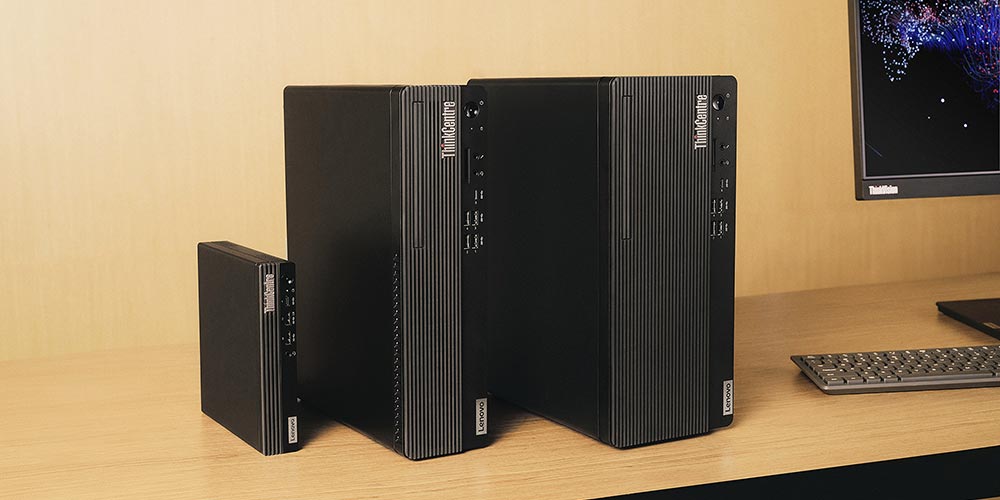At Embedded World last week, Qualcomm made a major IoT announcement about a new AI-ready platform for both home and industrial use. There was also an additional briefing on Qualcomm Connect regarding service-defined Wi-Fi.
These announcements signal a significant effort to fix the train wrecks that smart homes and smart buildings have been.
Let’s discuss that this week, and we’ll close with my Product of the Week: a new AI-ready desktop computer from Lenovo based on the latest AMD Ryzen 8000 platform. There are a lot of AI-ready things coming.
Challenges With Smart Home Technology
I’ve been following smart home technology since the 1970s when I first got excited about X10 and proceeded to rip out all of the light switches in my small apartment and replace them with X10 alternatives.
I also had an X10 robotic turntable back then, which was pretty cool when it worked. You could select individual tracks and replay a stack of records. However, it worked far less than it should have, and X10 technology was dubious at best on a good day.
Over the years, I’ve tried multiple platforms from various vendors that didn’t interoperate, often resulting in more aggravation and cost than benefit. Recently, I had a company come out and bid on replacing my Insteon system with something newer. That bid was a whopping $45,000, which would blow out my modest budget. I decided not to buy that expensive solution because it, too, was likely to become obsolete in a few years.
We are now moving to AI, and there has been progress on standards. The Google Matter standard has gotten a substantial amount of interest. In addition, the Amazon Alexa platform has been surprisingly good at embracing third-party platforms and allowing voice control over the products it will connect to. However, patches or updates on any of the connected systems often result in them not working for a while or at all.
What is needed is a higher degree of hardware commonality to reduce the complexity that is making what should be easy-to-use hardware hard enough that most haven’t adopted the technology.
Qualcomm Connect: Service Defined Wi-Fi
Working in concert with British Telecom, Comcast, and a few other large cable companies and carriers, Qualcomm has created a solution called Service Defined Wi-Fi that allows these internet service providers to offer a service that will embrace your compliant smart home devices and integrate them into a common central control that users can access at home or away from home.
You’d log into a user portal to see and control your smart home switches, plugs, appliances, security cameras, TVs, lighting, HVAC system, and other connected devices — like your electric car, for instance — and access and control those devices from any connected PC or smartphone while at home or when you are remote.
The handy thing about a service provider approach is that not only can you call for support, but these providers regularly provide technicians who, for a fee, can troubleshoot your problems remotely or on-premises and get you up and running, giving users a better experience than the DIY approach that most solutions require today.
But this addresses only part of the problem.
Qualcomm’s AI-Ready IoT Platform
Last week, Qualcomm announced new embedded edge AI platforms and micro-power Wi-Fi SoCs, potentially creating a level of standardization in these edge devices that should provide a far more consistent experience when coupled with a Service Defined Wi-Fi offering.
Along with 35 companies at Embedded World, Qualcomm is bringing to market a cross-vendor solution with standardized hardware that should reduce the cost of creating and servicing next-generation IoT smart building solutions for homes or businesses far more easily than it has been.
The announced hardware uses up to 88% less power than previous generations and uses the most advanced wireless technologies currently available, like the Qualcomm QCC730 platform for Wi-Fi IoT connectivity. These features enable the use of more battery-powered IoT devices and fewer that require AC power, resulting in significantly lower installation and service costs.
These modules could enable better security camera solutions and reduce your concerns about porch pirates, pet pirates, and that new raft of thieves flying in from other countries to burgle your home. The result should be a more comprehensive system to manage your home both when you are there and especially when you are not.
AI for Smarter Home Management
Ideally, when we have Service Defined Wi-Fi, Google Matter, and Qualcomm’s AI-ready platform, we’ll be able to overlay either a cloud-based or on-premises AI solution to manage your home or business automatically.
Components will work automatically by triggering both the camera and lights if someone enters your property, home, or business. They will also activate your lights and provide automated voice guidance in the case of a natural disaster, burglary, or fire, helping you and your family get out of danger as quickly as possible.
The system features a single interface for the entire site, offering a comprehensive AI-driven solution that proactively manages safety and security. It automatically closes electric shutters before severe weather hits and alerts you if a pet is about to escape the yard, helping to prevent potential hassles and lengthy searches (this happened to us once, and it was a multi-month pain in the butt).
The ability to protect better against package theft, burglary, kids with too little sense and too much time, pet theft or escape, and intrusions by wild animals that could put your home or pets at risk, is at the heart of the smart home concept.
AI is the icing on this IoT cake, and these Qualcomm services and products are on the critical path to finally making this all work.
Wrapping Up
Smart homes and buildings have been a big disappointment that promised a lot but delivered little in the way of an easy-to-use, integrated offering.
Working with a cable or telephony service provider that adopts the Qualcomm concept of Service Defined Wi-Fi and pushes IoT devices to utilize Qualcomm’s common hardware solutions should enhance the potential of smart homes. The advancements and success of Google Matter further amplify this potential.
Incorporating a new class of increasingly capable AI solutions can provide autonomous control and better assure the outcomes originally promised by smart homes back in the 1970s. I guess it just took a while to figure out what was needed to fulfill the promise.

The Lenovo ThinkCentre M75 Family of Desktops
Lately, there has been a lot of focus on the AI PC, but it has all been about laptop computers, leaving those of us who live on desktop computers SOL. That changed last week with the announcement of Lenovo’s latest ThinkCentre desktop PCs, which use the AMD Ryzen PRO 8000 series desktop processors.
The ThinkCentre M75 Gen 5 family of compact PCs is the first desktop line with NPUs (neural processing units). They’ll perform at around 16 TOPS (trillion operations per second), in line with the AI PC laptops that are also now in the market.
Available in three basic configurations, the lineup includes:
- ThinkCentre M75q tiny form factor
- ThinkCentre M75s Gen 5 small form factor
- ThinkCentre M75t Gen 5 tower

The ThinkCentre M75 Gen 5 series of desktops leverages AI technology to improve energy efficiency and achieve remarkable performance. (Image Credit: Lenovo)
All three come with integrated graphics, though the tower configuration can be equipped with the AMD Radeon RX 550 4G or the AMD Radeon RX 6600LE graphic card.
While the M75t won’t be available yet in North America, the M75s arrives in May with an initial price of $709, and the M75q is slated for June with a reasonable starting cost of $749.
The products are green in that they incorporate over 85% recycled plastic in the chassis, keyboard, and mouse and use mostly recycled materials for the shipping carton and packaging.
These are the first AI PC desktops to come to market, and for those aggressively developing for or using Microsoft Copilot, these could be the ideal desktops for you, and that makes the ThinkCentre M75 Gen 5 family of desktops my Product(s) of the Week.

























































